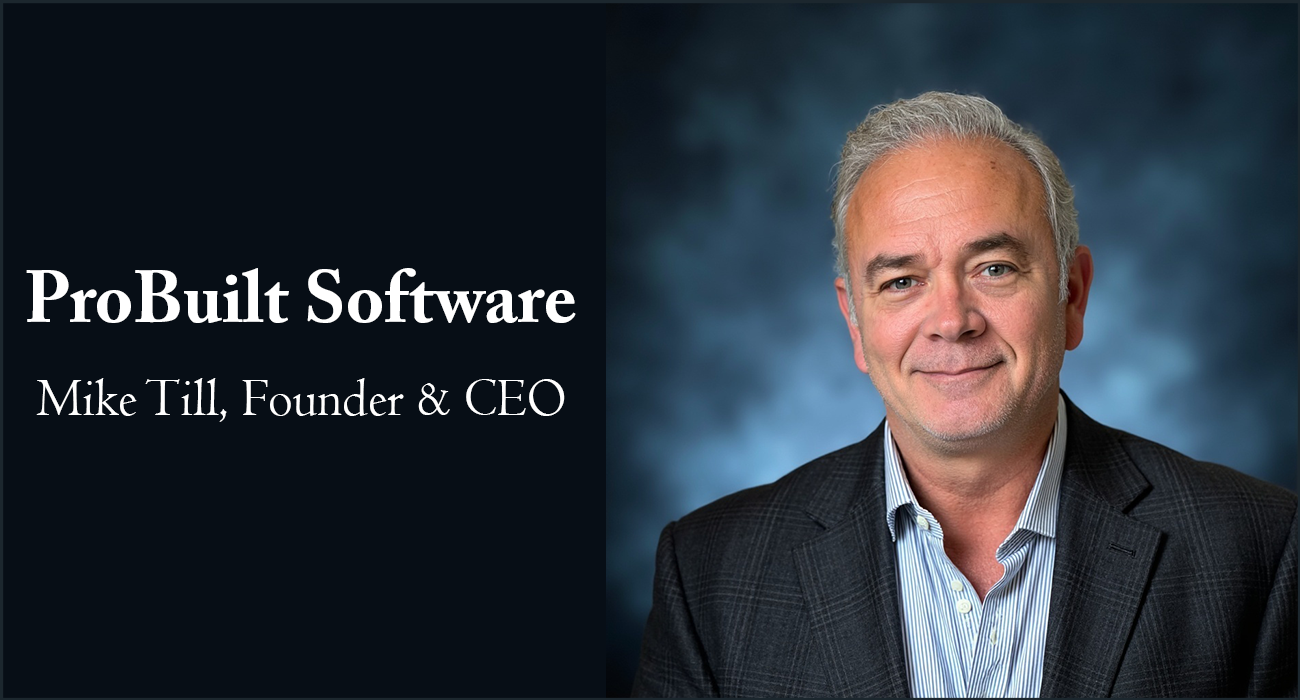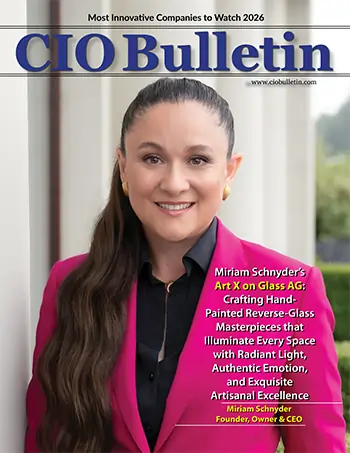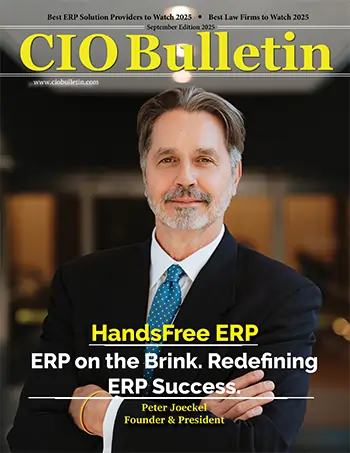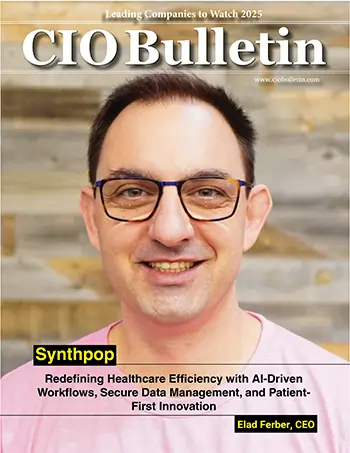Leading Companies to Watch 2025
CIO Bulletin

Visionary teams turn bold ideas into reality, transforming challenges into opportunities that redefine industries. ProBuilt Software embodies this spirit, driven by a group of experts determined to push beyond the limits of conventional technology.
Decades ago, ProBuilt’s senior team collaborated to build the trucking industry’s most widely used Terminal Server-based Transportation Management Software. Their innovative solutions empowered countless businesses, but their vision extended further. After successfully exiting their company in 2020 and taking time to recharge, the team reunited with a daring goal: to create a browser-based application that matches the multitasking capabilities of desktop software. Industry veterans and large development firms had long deemed this impossible, yet the team saw a path forward—a unique architecture to revolutionize online applications.
With relentless dedication, they spent two and a half years developing ProBuilt ERP, the world’s first online platform with floating forms technology. This groundbreaking system restores the productivity of desktop software, enabling seamless multitasking within a browser. ProBuilt ERP doesn’t just improve workflows; it redefines how businesses operate online.
Based in The Woodlands, Texas, just north of Houston, ProBuilt Software is a proud homegrown company rooted in community and craftsmanship. Every line of code, every design, and every support interaction is handled in-house by a team of highly skilled, creative, and passionate professionals. ProBuilt doesn’t outsource or offshore—it’s a company built on pride, expertise, and a commitment to excellence.
In an exclusive interview with CIO Bulletin, Mike Till, Founder and CEO of ProBuilt Software, shared insights into his team’s commitment to excellence. Every line of code, every design, and every support interaction is crafted by their dedicated in-house team—seasoned innovators who don’t merely follow trends but boldly reshape the industry’s standards.
Interview Highlights
Your team’s journey began with decades of collaboration in developing leading Transportation Management Software for the trucking industry. What inspired the reunion after your 2020 exit to tackle the ambitious challenge of creating the world’s first multitasking, browser-based software system?
After selling my software company, I thought I was done building software. But there was one idea that I had which had never been explored and, frankly, everyone I talked to said wouldn’t work. I wanted to create a program that runs in a browser but behaves like a desktop application — meaning, multitasking. Every single online program ever made has been limited to one page at a time. I thought that if my idea could work, then I would get back into software and we’d challenge the entire software world. So, in the end, the idea did work, and here we are, ready to challenge the entire online software industry.
ProBuilt’s patent-pending floating forms and data stacking architecture is described as a seismic shift from the traditional one-page-at-a-time model. Can you explain what makes this technology a game-changer for SaaS and how it enhances productivity for users?
All online software is basically the same one-page-at-a-time architecture that started showing up in offices back in the 1970’s, just with a more colorful display. Later, when companies started installing Windows software on their machines, they could multitask. They could open up and use multiple copies of just about every screen in the program. But when software started moving to the browser, the architecture went back to being the same as it was 50 years ago.
Our architecture breaks that constraint. ProBuilt allows users to open as many floating forms as they want—side by side, overlapping, even stacked—and interact with them all at once. You can open a customer, a quote, an invoice, and a job—drag them around, compare them, copy between them—all without leaving the screen or waiting on page loads.
This is the first real multitasking framework for the browser. It doesn’t just improve productivity—it redefines what productivity in SaaS looks like.
Your multitasking UI allows unlimited interactive floating forms within a single browser window. How does this innovation differentiate ProBuilt from other software providers, and what specific pain points in browser-based software does it address?
Every cloud application on the market today still operates under the same architectural constraint—it loads one page at a time. You click a menu, and it loads a new page—replacing whatever you were just working on. That’s the OPAT model, and it’s universal across SaaS.
ProBuilt is the only cloud software that breaks free from that limitation. Our users can open as many floating forms as they need, interact with them simultaneously, and never lose their place. This isn’t a user interface trick—it’s a completely different underlying architecture.
We eliminate the forced one-at-a-time structure that makes comparing records or copying details a constant back-and-forth. In ProBuilt, everything you need can stay visible and active. It’s the first system that truly works the way professionals think and operate—in real time, across multiple streams of work.
You’ve recently opened licensing for your patent-pending technology to software companies and enterprise developers. What are the key benefits for licensees, and how do you envision this reshaping the competitive landscape of SaaS development?
SaaS companies are realizing that the next leap in software isn’t about adding features—it’s about removing friction. But re-architecting an entire system to break out of the OPAT model is enormously complex and expensive.
We’re not offering a shortcut—we’re offering a foundation. Our architecture isn’t something you bolt onto an existing system. It’s something you build on if you want to leave OPAT behind entirely. For companies serious about redefining how their software performs, licensing our framework gives them access to a battle-tested, patent-pending foundation that’s years ahead of the industry. It’s not UI decoration—it’s a fully engineered multitasking environment built to scale and built to last.
This isn’t just a competitive advantage—it’s a generational leap forward. Our technology has already drawn interest at the federal level, where modernization and operational speed are mission-critical priorities.
This changes the competitive landscape. Suddenly, your app doesn’t just look different—it works differently. And in a market saturated with “me too” products, that’s a huge advantage.
ProBuilt emphasizes designing, developing, and supporting its software in-house with a highly skilled team. How does this approach ensure quality and innovation, and what role does your team’s culture play in driving success?
We don’t outsource anything, we don’t offshore anything either. Our whole company is in our office every day. We work together closely and that means that we can create better software, faster than the competition. While other companies in our industry are focused on processing payments, we’re focused on developing innovative tech that moves the bottom line.
Are there any new initiatives, products, or enhancements in development that your clients or potential licensees should be excited about? How will these build on your existing technology?
Our immediate focus is on expanding visibility and adoption of the core architecture itself. Floating forms and data stacking represent such a fundamental departure from the status quo that simply exposing more users—and more developers—to what’s now possible is a top priority.
From a licensing standpoint, we’re continuing to refine how we present and package the technology so that software companies can more easily evaluate and integrate it. That includes better documentation, clearer use case examples, and simplified technical entry points.
We’re not chasing feature expansion right now. We’re focused on delivering the cleanest, fastest, most powerful multitasking framework ever built for the browser—and getting it into the hands of those ready to lead the next era of SaaS.
Looking ahead to 2025 and beyond, what are ProBuilt Software’s strategic goals, and how do you plan to expand the application of your multitasking framework across industries?
Our goal is to make the one-page-at-a-time model obsolete. That means two things: continuing to grow ProBuilt ERP in industries like construction, logistics, and field services—and helping other software companies make the leap through licensing.
From the financial to healthcare sectors—and even within federal infrastructure—users are still navigating software one screen at a time. ProBuilt offers the architecture to change that—for good.
This architecture doesn’t just belong to one product. It belongs to the future of software, and we intend to lead that transition.
The Visionary Leader Upfront
Mike Till is the Founder and CEO of ProBuilt Software. He previously founded PCS Software in 1996, leading its transformation into one of the most widely adopted transportation management platforms in the industry. Today at ProBuilt, Mike is pioneering the next leap in browser-based software with a patent-pending architecture built on floating forms and data stacking—marking a decisive break from the outdated, one-page-at-a-time model that still dominates SaaS.







